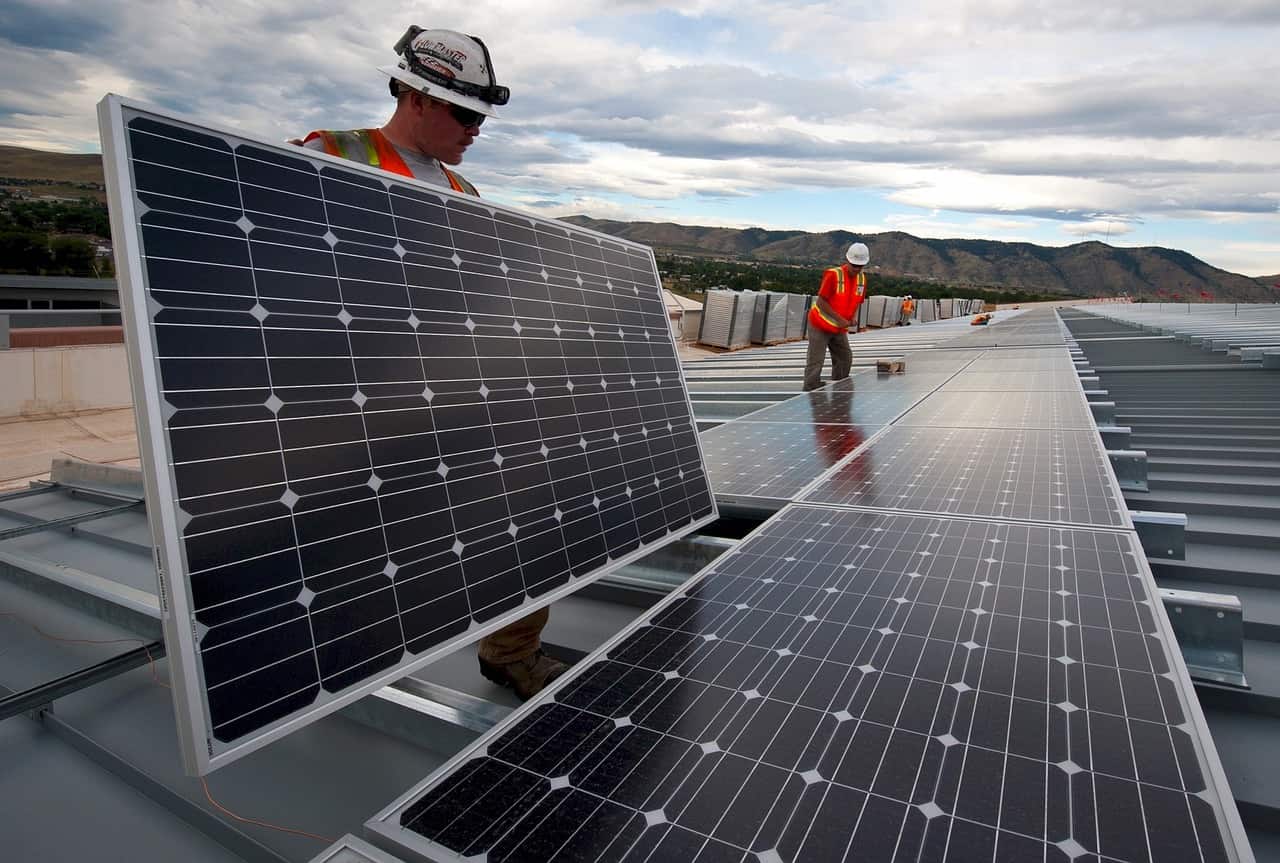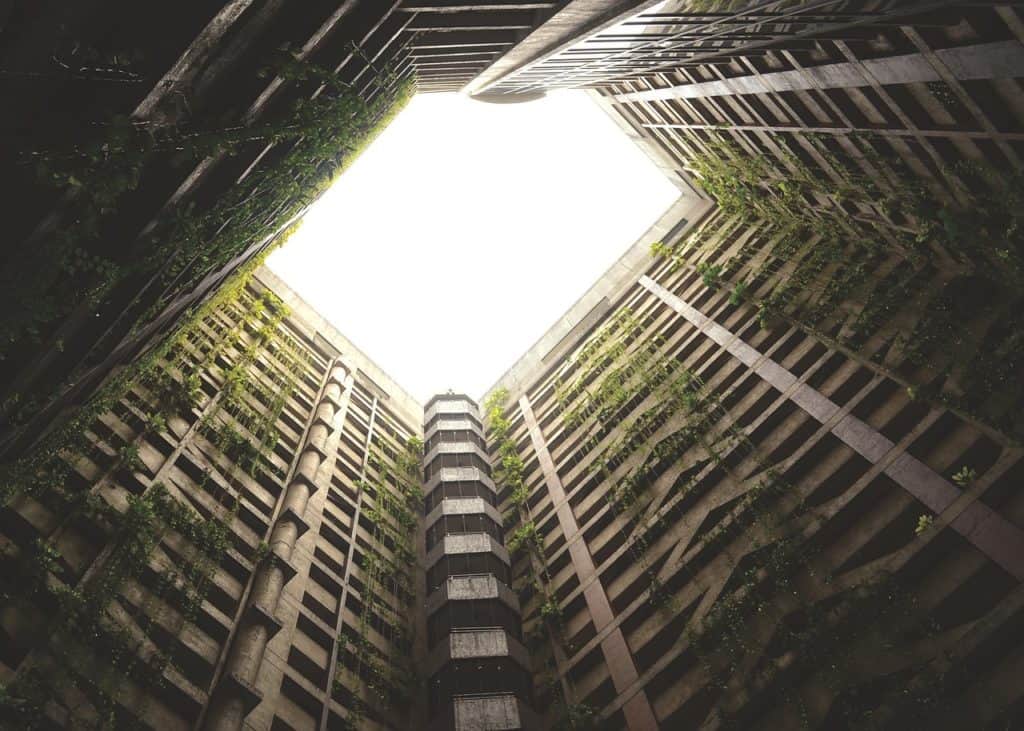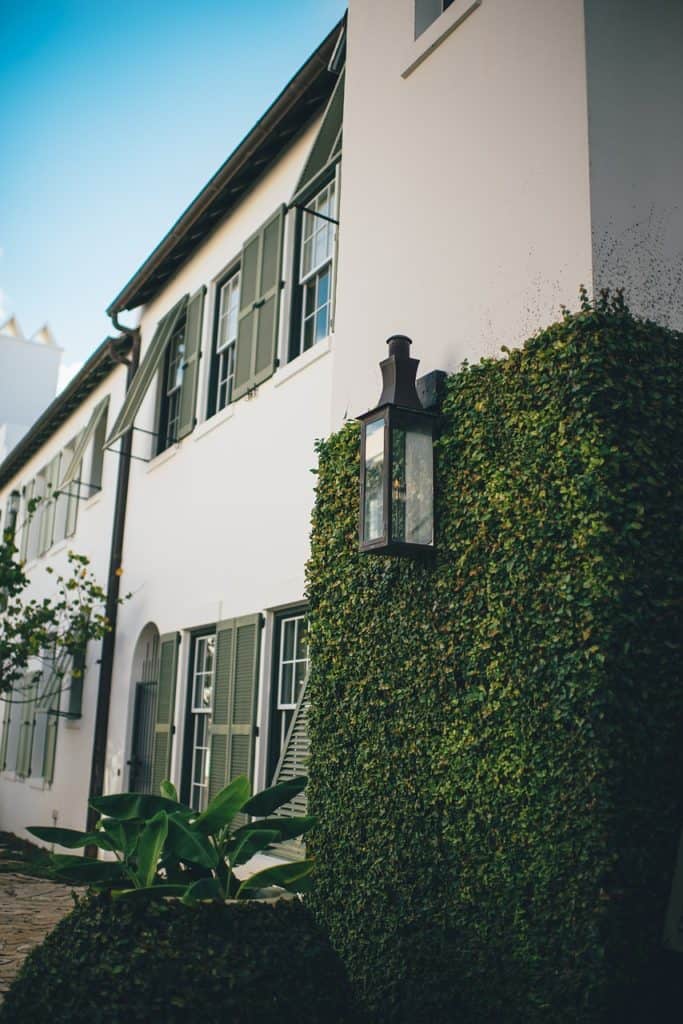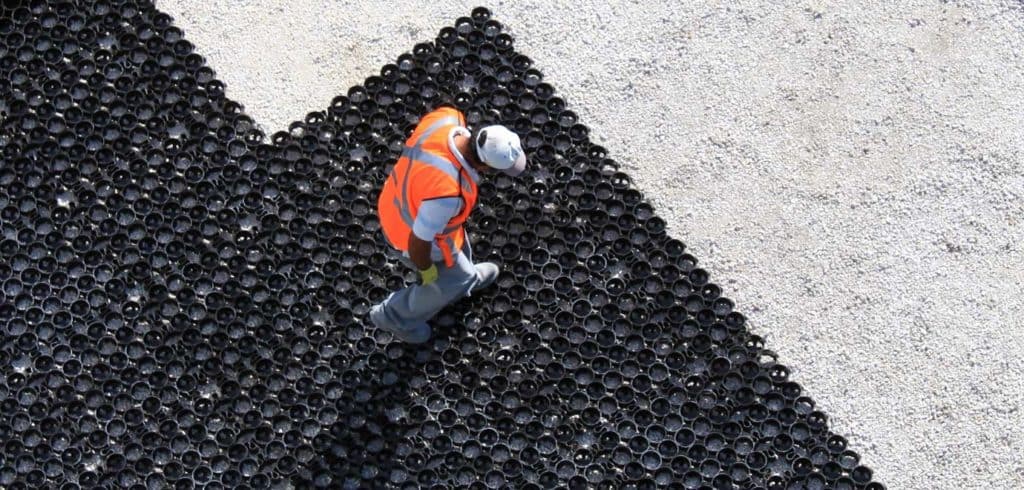Create a Sustainable Home Design for the Eco-Friendly Client
Some clients need different requirements for the kind of projects they are visualizing but it is your job as a professional to make that visualization a realization.
When hired to build a residential building, you are hired for your experience, your knowledge, and your professional recommendations. You are expected to know the time needed to build their dream project, the kind of materials required to meet their needs, and the right people to execute the project while providing a competitively-priced service in the area.
Common home projects include driveway installation, shed or barn construction, patios, hot tub pads, pool skirts, and walkways. Now, most of these applications have a standard way of construction but being able to recommend your client alternative materials or building options makes you stand out as a professional.
Among the most practical and often-requested additions to residential properties is a well-constructed shed—serving everything from simple storage to hobby space, workshop, or even a guest retreat. While traditional wood sheds have long been the go-to option, savvy professionals know that recommending alternatives like duramax sheds can offer clients superior value and convenience.
These sheds are made from high-quality, durable vinyl or metal materials that require minimal maintenance and resist rust, rot, and weather damage over time. By offering such durable solutions, you’re not only aligning with your clients’ long-term needs but also showcasing your commitment to smart, efficient building practices.
When a client hears that their backyard structure won’t warp or fall apart in a few seasons, your professional insight instantly earns trust—and helps bring their vision to life with confidence.
Most clients just ask for typical projects to be built in traditional way but soon you will get a client who thinks outside the box and wants to be creative and innovative in their residential project.
They are interested in how to design a sustainable home.
Meeting the Environmentally-Conscious Client

And the trend is only rising.
Homeowners and even business owners are becoming more and more sustainable and environmentally-friendly for numerous of reasons. Apart from just being friendly to the Earth, these are some areas of concern your environmentally-conscious client may have:
-
Health
Pollution has been linked to cause numerous of chronic diseases and deadly cancers. Pollution comes in many forms and it destroys the quality of our air, water, earth and, in the end, our quality of life. Due to severe pollution in certain cities, such as India, have reached such high levels of air pollution that have caused the city to mandate citizens to stay indoors on days with dangerous levels.
-
Save Energy
Traditional methods of heating, cooling, lighting and any other home functions require the use of energy and electricity. Most of these methods tend to waste large amounts of energy that make your electricity bill shoot through the roof. Also, power plants emit immense amounts of pollution to power cities. Fortunately, energy-efficient products are becoming more popular and although some may cost slightly more to install or use, the amount of energy used is severely cut down, which saves consumers money in the long run.
One of the most effective ways to embrace energy efficiency in the home is through permanent LED lighting. Unlike traditional bulbs that consume excessive power and need frequent replacements, LED lights offer a long-lasting, cost-effective solution that significantly reduces energy usage. These lights are designed to provide optimal brightness while consuming a fraction of the electricity, making them a smart investment for homeowners looking to cut down on utility bills without compromising on quality.
For those in the Dallas area, Avia Lighting Dallas provides top-tier LED lighting solutions tailored to both residential and commercial spaces. Their range of permanent LED installations not only enhances the aesthetic appeal of a property but also ensures consistent, reliable illumination year-round. By opting for professional-grade LED lighting, homeowners can enjoy lower maintenance costs and a reduced environmental footprint, contributing to a greener, more sustainable future.
-
Conserve Water
Same with electricity, water is used in everyday activities. From gardening, to laundry, to washing dishes and even brushing your teeth, unnecessary amounts of water are being used causing water treatment plants to work overtime, which uses large amounts of energy to filter our water. To prevent large water bill charges and further pollution of our accessible water, consumers are opting for products that help limit the use of water to conserve.
-
Reduce Waste
Everything produced by us ends up being trashed at some point. It’s inevitable. But materials, such as plastic, takes hundreds of years to fully deteriorate. This causes landfills to pile up exponentially since the rate of trash coming in is immensely greater than the trash’s rate of decomposition.
Why It’s Good to Differentiate Yourself in the Industry

An opportunity is presented to the professional to become specialized in this fairly new industry. There will soon be even more demand for sustainable products and services and it is up to you to find your niche and ride the wave.
As a professional in the construction and building industry, up your game when you meet a potential client that wants to create a sustainable home design by giving them your specialization and knowledge to offer the exact tools and materials to make their projects a realization. Educate yourself on how traditional construction methods affect the environment and then learn about the renewable and sustainable alternatives that can help you solve common issues. Of course this is going to take some time and work but it is necessary if you want to provide better products and services.
Now, here’s why you should take the time…
The Business of Sustainability
A study by Nielsen in 2014 found that “55 percent of global online consumers across 60 countries say they are willing to pay more for products and services provided by companies that are committed to positive social and environmental impact”.
Currently, green building is growing every year. Demand for green building industry jobs will grow to to 3.3 million by 2018. The trend is only rising the more consumers become environmentally-conscious.
Brands stand out more in a sea of small and big companies if they are more socially and environmentally responsible. Being a sustainable company or a company that has sustainable services and or products offers these options to consumers that are interested in green building. Due to this popularity, consumers are opting for a sustainable home design.
Before we dive into the building opportunities, first we need to see what materials are eco-friendly for designing a sustainable home.
Materials for Building a Sustainable Home

- Straw Bales: Straw Bales are the stalks left over after the edible part of the wheat/rice grain is harvested. Farmers dispose of these stalks by baling the straw, which turns it into valuable material for insulation, and selling the bales. Straw bales are biodegradable, have insulation levels of R-30 – R-35 and require barely any energy to create making them low-embodied. They are so easy to use, any novice builder can install them on their first try. When using straw bales for insulation, they are treated the same as any other insulation which include avoiding exposure to high levels of moisture.
- Bamboo: Bamboo is one of the strongest and flexible naturally-occurring material that is perfect for all types of construction and structures. Bamboo’s rapid growth can help prevent deforestation, pollution, is easy to cut, is light, and can be used alone or in combination with other construction materials.
- Recycled Plastic: The amount of plastic will surpass the quantity of fish in our oceans by 2050 and recycling will only keep this from happening. Luckily, plastic can be recycled and used for everything such as building blocks, permeable pavers, and even carpet.
- Wood: Wood is a renewable source. That’s if the same amount of cut trees are replanted and deforestations of rainforests are stopped. As for construction, wood has some advantages that traditional industrial building materials don’t have. Processing wood into construction products requires less energy-intensive methods and planted trees absorb CO2 and create biodiverse habitats.
- Solar Power: Solar-power energy is convenient and easy to collect. Being an installer of solar-energy tiles, roofs, lights, etc. would distinguish any contractor from the pool of traditional contractors. Being able to design and engineer with solar power would also cause you to stand out from other professionals.
- Cool Roofing & Windows: Roofs are detrimental to any house. Solar-panel roofs are great for energy use and conservation but having a cool roof to add to that saves you even more energy and money. Cool roofs reflect heat from the sun and prevents that heat from transferring into your home, which cuts back on air conditioner use. Just like cool roofing, triple-glazed or low-e windows keep the outside heat and UV rays.
- Paper: Apart from the amount of dumped plastic, paper is another material that needs to be recycled to avoid deforestation. Recycled paper is found in many home applications such as carpet and even building bricks.
Being knowledgeable about these sustainable house materials is definitely helpful but understanding how you can use them together can make your client’s project completely sustainable.
Typical Home Applications

Here are some examples:
- Sheds – Sheds are quick and require little planning to construct but great to have when you have tools, lawn care supplies, toys, sport equipment, and etc.. Since sheds are mainly for storage purposes, building one requires little thought on construction. If you’re building a shed for a client, use sustainable materials in as many ways as you can. Use bamboo in place of wood to build the shed, use permeable pavement for the flooring for a spill-proof floor, add solar tiles to the roof for endless lighting.
- Driveways & Walkways – Adding concrete driveways adds more impervious cover to your client’s property, meaning you’re more likely to deal with runoff water and flooding. Suggest that your client use permeable pavement instead to work with the environment and still enjoy having car access to your home and garage. Consider suggesting your client opt for a grass driveway if they’d like to keep the green of their home while enjoying the same perks of a traditional driveway.
- Patio Deck/Pool Skirt – Patio decks can be built in numerous of ways. You can have an elevated patio deck made of wood or a patio deck leveled with your back yard using permeable pavers. Make your patio out of bamboo or recycled plastic pavers. Get creative.
- Flooring – There are numerous of products for flooring out in the market that are sustainable and eco-friendly. Inform your client that it’s possible to walk into your home and feel great about their home floor to ceiling. Choose from carpet made from plants or hardwood floors made from reclaimed wood or wood from a sustainably managed forest.
- Windows – Your windows are important when it comes to letting natural light shine into your home but it allows the sun’s rays to easily turn your home into an oven. Opt for heat-flecting windows that reflect the sun’s rays back to prevent them from heating your home up. Wooden windows, while classic in charm and rich in tradition, also offer impressive insulation when crafted with care. Unlike their aluminum or vinyl counterparts, wooden frames naturally reduce heat transfer, helping your home stay cooler in the summer and warmer in the winter. If you’re after the timeless beauty of wood without sacrificing modern efficiency, this website known as Naturfonster offers a range of sustainably crafted wooden windows that blend traditional craftsmanship with innovative energy-saving design. Their wooden windows don’t just look good—they work hard behind the scenes to maintain a comfortable indoor climate. Plus, with proper treatment, they stand strong against the elements while aging gracefully over time.
- Garden – Gardening is in itself sustainable but maintaining a garden can be wasteful. If you specialize in landscape, teach your client about alternative options that help conserve water. Recommend or install irrigation systems that accurately and strategically water your plants with as little water needed.
How Can You Stay Sustainable in Construction

Apart from using sustainable construction materials, you can also lessen your impact on the environment by keeping the following in mind. For example:
During Planning:
Use recycled paper in your note taking, planning and designing phases.
Conserve the energy and water you use while in the office planning for construction.
During Construction:
Don’t just throw all trash away. Bring recycling bins to the construction site. Separate plastics, paper and aluminum into different recycling bins. Figure out the country’s recycling process and dispose of the recycled material the proper manner.
Bring water dispensers and reusable water bottles for the construction site to cut down the us of plastic water bottles.
Of course there are numerous of other ways to be sustainable and eco-friendly but as a start you can begin by utilizing these alternative options.
The Next Step
Now that you’ve touched on the subject of becoming a more sustainable professional or just a professional that offers sustainable opportunities, you may want to take it a little further. Consider looking into LEED and green building certification. Make it your goal to become an expert in these certifications to create buildings that are not only valuable property-wise but also valuable in their ability to be a low-impact development that is eco-friendly from construction to utilization.
As for that, that is a whole other realm of exciting opportunities.

